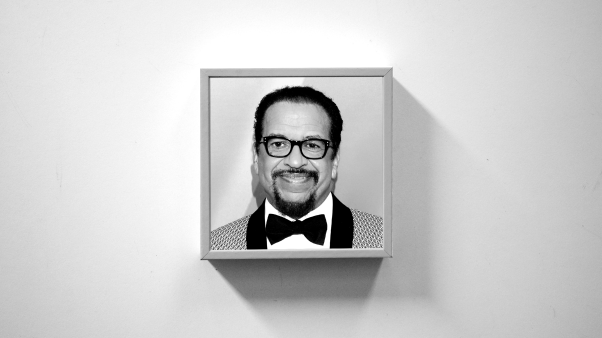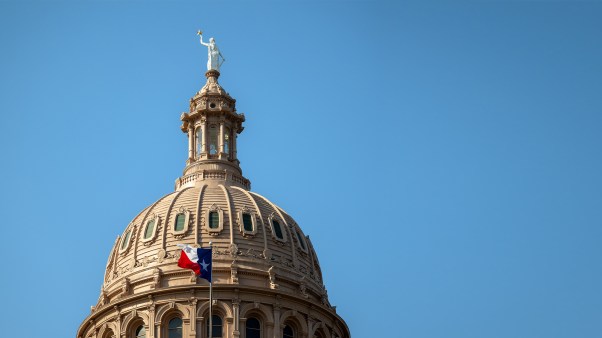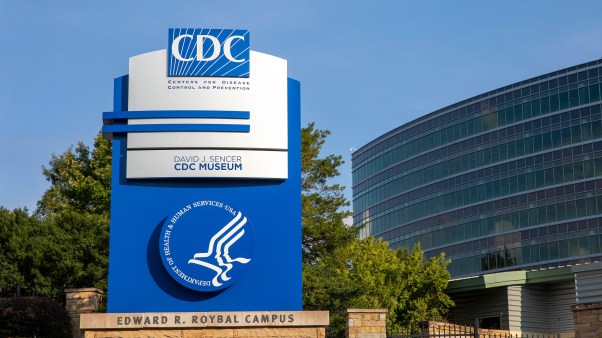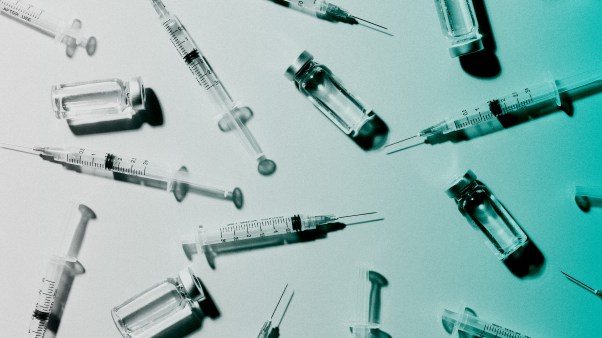Last fall, The New York Times’ Michael Barbaro, host of The Daily podcast, declared the overturn of Roe v. Wade had “backfired.”
Barbaro and Times reporter Margot Sanger-Katz said abortion numbers had risen nationwide since the Supreme Court’s 2022 Dobbs v. Jackson Women’s Health Organization decision, which turned over abortion policy to individual states.
Though abortion rates had plummeted after Dobbs in states with restrictions, Sanger-Katz said, “When you consider that there are all of these states that banned abortion totally, where abortions went to zero, what it’s really telling us is that the states where abortion stayed legal increased by so much that they were able to sort of counterweight that reduction.”
But pro-life activists are celebrating rising birthrates in 2023 and challenging the narrative that abortion restrictions don’t work, or worse—that they actually increase abortions.
The question of the effectiveness of abortion legislation is especially relevant as more states consider whether to restrict, ban, allow, or even promote abortion within their own borders.
Since Dobbs, voters in Vermont, California, Michigan, and Ohio have enshrined a right to abortion in their state constitutions. In Kentucky, voters rejected a constitutional ban on abortion. This year, at least 13 other states will consider new abortion policies ranging from adding abortion rights in their state constitution to banning the practice altogether.
Last October, the Guttmacher Institute, once the research arm of Planned Parenthood, estimated more than a million abortions would be committed in America in 2023. That would be roughly a 10 percent increase over 2020.
The Society of Family Planning, a nonprofit whose mission is, in part, to ensure “all people have access to evidence-informed and person-centered abortion,” estimated there were 2,200 more abortions nationwide in the year post-Dobbs.
Michael New, a senior associate scholar at the pro-life Charlotte Lozier Institute, which studies abortion trends, said the Society of Family Planning’s estimates—referenced in the Times reporting—are unreliable because researchers used abortion numbers from only two months before Dobbs to estimate a monthly average, to which they compared the 12 months following Dobbs.
He also questioned the validity of the Guttmacher Institute’s data. While some pro-life activists are reticent to take any Guttmacher statistics seriously, New said their numbers tend to line up with data from the Centers for Disease Control and Prevention. In this case, however, he said their methodology allowed such a huge margin for error as to make the numbers statistically meaningless. Guttmacher’s estimates for Florida, for example, span a difference of nearly 10,000 abortions between their upper and lower estimates.
Other groups, including The Heritage Foundation and Secular Pro-Life, also questioned the validity of claims that the Dobbs decision caused abortions to increase, pointing out that the birthrate—the number of babies born among women of childbearing age—rose substantially in states that passed abortion restrictions.
Secular Pro-Life executive director Monica Snyder argued that even if the Society of Family Planning’s numbers were accurate, they indicate a far more modest increase than in recent years—showing Dobbs did impact behavior.
“If abortions were increasing 8 percent before Dobbs, and in the first 12 months after Dobbs they increased only 0.2 percent,” Snyder wrote, referencing the uptick in abortion between 2017 and 2020, “we already see suggestions of a massive impact from Dobbs.”
Trying to count or even estimate the abortion rate is inherently tricky. Most states require clinics to report annual abortion numbers, but many are years behind in submitting their data. Abortions will become even harder to track as the abortion-pill regimen, which now accounts for more than half the abortions committed nationwide, is widely available by mail.
Despite the confident framing of the numbers in the Times and elsewhere (The Atlantic said the data demonstrated “Dobbs’s Confounding Effect on Abortion Rates”), New agrees with the Guttmacher Institute that the available data “do not yet support a clearcut narrative on national abortion trends.” (In the National Review, he has countered claims that Dobbs didn’t reduce abortions as well as new estimates of pregnancies conceived in rape in states with pro-life laws.)
Pro-life advocates don’t think we know for sure how many abortions happened across the country last year but argue the evidence in the states that have restricted abortion shows legislation does work.
Birthrates rose 2.3 percent across states that banned abortion after Dobbs.
By looking at birthrates beginning seven to eight months after the passage of abortion restrictions compared with prior years, or comparing states with new abortion restrictions to rates in states with more permissive abortion laws, both pro-life and pro-abortion groups acknowledge that pro-life laws have had a major impact.
Analysis of preliminary data from the CDC shows that birthrates rose in 2023 by an average of 2.3 percent across states that banned abortion after Dobbs (and 2.7 percent including Texas, whose ban went into effect in 2021).
For example, at least two different studies found an average of 1,000 additional births per month in Texas, beginning seven months after the state’s “heartbeat” law, which banned abortions after roughly five weeks of pregnancy, went into effect in 2021.
Researchers found the bump in birthrates in states with total abortion bans represented “approximately 32,000 additional annual births resulting from abortion bans.”
Debi Wehmeier is the founder and executive director of Heart of Texas Pregnancy Resource Center, a Christian ministry with a location in Austin and another in Dripping Springs, a nearby rural town. Two hundred women visit Heart of Texas every month, Wehmeier said. She hasn’t noticed an increase since the heartbeat law took effect, but she has noticed a shift in demeanor among the women who come in.
“Before Texas outlawed abortion, they were more like, ‘I’m pregnant and I don’t know what to do, so I’ll get an abortion,” she said. “Now it’s more like, ‘I’m pregnant and I don’t know what to do because I can’t have an abortion.”
Wehmeier, who opened Heart of Texas 11 years ago, said its mission to serve women in crisis pregnancies hasn’t changed, and she still firmly believes abortion harms women as well as their babies.
She’s hoping to open another location in nearby Hays County, Texas, which has a high rate of teen pregnancy. Wehmeier celebrated the passage of Texas’ heartbeat law and said her team has grown even more sensitive to women grappling with the shifting culture in Texas after it took effect.
“Our hearts go out to them,” she said. “It’s such a paradigm shift, for a woman who is sexually active to become pregnant. … Before, when they came in, abortion was an option. Now it’s really not.… We have sympathy for them. They’re scared.”
Texas women seeking an abortion could travel to next-door New Mexico to legally obtain one, but that would be at least a 600-mile trip for women from Austin.
The CDC data also found that the 2023 birthrate increases were highest in Texas and Mississippi, where the distance to nearby states that allow abortion is the greatest. New said his data confirmed that geographical (and therefore economic) barriers do, in fact, protect women and babies from abortion.
“I have county and local birth data from Texas, and we saw the biggest birthrate increases in those Texas counties that were farthest away from out-of-state abortion facilities,” New said.
He’s seen similar trends in Missouri, where a “trigger law” went into effect immediately after the Dobbs decision, effectively outlawing abortion there. “Abortion facilities are strategic; there are a couple in Illinois that are very close to the Missouri border. I think they do try to promote abortion to women in Missouri,” he said.
The abortion landscape in Michigan is a sort of mirror reflection of the situation in Texas. In 2022, Michigan voters passed a constitutional amendment allowing abortion at virtually all stages of pregnancy. Jim Sprague, CEO of Pregnancy Resource Center Grand Rapids, said he’s seen fewer women choose life since the amendment passed.
“In 2022, we saw 285 women make a life decision,” Sprague said. That’s among the roughly 1,500 women facing crisis pregnancies that come into his center every year. “In 2023 our number currently stands at 202, but we’re continuing to see relatively the same number of women,” he said.
PRC Grand Rapids also serves women not immediately at risk for abortion. Sprague said last year his team ministered to an additional 3,700 women in need of diapers, formula, car seats, baby clothes, parenting classes, or other family resources. In churches and schools throughout Michigan, the center also offers a sex-ed curriculum that encourages abstinence.
Like Debi Wehmeier in Texas, Sprague said he’s noticed the new legal landscape has shifted the way women in his state think about abortion. “We’ve seen an increase in the number of what I would call challenging cases”—women who are set on abortion and won’t change their minds, Sprague said. “Part of what’s happening is this attitude that abortion is this free-for-all in Michigan.”
Michigan’s Prop 3 took effect in late 2022, and Sprague expects data will show an increase in abortions for 2023. After that, he expects the state will stop tracking them. Prop 3 didn’t automatically undo the state’s abortion restrictions, including the mandatory reporting requirements, but state lawmakers are steadily working to undo them.
“I know what’s going to happen in 2024, because we’re no longer going to be required to report abortions,” Sprague said. The abortion rate “will probably fall right off.”
As more states cover abortions through state-funded insurance, such as Medicaid, funding can be a factor in increasing abortion rates.
Last year, abortions went up the most in California, which voted to cover abortions under Medicaid in 2022; Illinois, which voted to cover abortions under Medicaid in 2017 and borders Missouri, where abortion was essentially banned right after the Dobbs decision; and New York, where abortion has been covered by Medicaid for a long time, but Gov. Kathy Hochul signed a bill in 2023 mandating that all insurance plans in the state must cover abortions.
Nationally, the abortion rate has been rising since 2017, though it is nowhere near as high as its post-Roe peak from 1980 to 1990. “There is evidence that when abortion is legal, or is made legal, that does tend to change sexual behavior,” New said.
The numbers seem to demonstrate something Paul taught the Galatians: that the law is a “guardian” or “teacher” (Gal. 3:24).
After the Dobbs decision, pro-life professor and author Carl Trueman wrote:
One argument that has surfaced recently, even in pro-life Christian circles, is that the fall of Roe is not a cause for rejoicing because the problem of abortion can only be solved by changing hearts—not by changing laws.… This reasoning fails to acknowledge that laws do not stand in isolation from a society’s moral imagination but are actually constituent parts of its transformation.
There is little doubt that Brown v. Board of Education helped to shift American thinking on segregation, as Obergefell v. Hodges has with thinking on gay marriage. We should pray that Dobbs does the same on abortion.
Advocates within the pro-life movement don’t always agree on strategy. “Abortion abolitionists” believe any policy short of an outright ban on all abortions with no exceptions would be tantamount to defeat. Others have a pro-life scope that includes sex education, embryo adoption, and crisis care for moms and babies.
But most in the movement would agree that preventing abortions is a central goal. For them, the drop in abortion and uptick in birthrates in states with bans is renewing confidence that pro-life laws save lives.














